Walking around Singalila National Park

Singalila national park is located in Darjeeling district, West Bengal at an altitude of 7000 ft above Sea level. This national park is home to the endangered Red Panda. So some wildlife enthusiasts do visit this place with the help of local guide to get a glimpse of red panda. According to us as long as the habitat for the wildlife is undisturbed and if we are lucky to sight them during our trek then it’s ok. But to commercially exploit a wild being when it’s existence is already in poor state is unacceptable. Also, sighting a wild being in it’s habitat is what we love but sighting the last remaining ones in a specific spot is more or less similar to watching them in a zoo.
With all these thoughts in mind we decided to visit Singalila with very simple plans like just wander around Singalila area and stop whenever you see any flower or bird or mammal. When the expectation is less whatever the output maybe, you will still be happy. That is what happened on our trip to Singalila. In this trip one of our naturalist friend Raghuram joined us. He is a core binocular birder who by the end of the trip started to spot even epiphytic orchids through binocular.
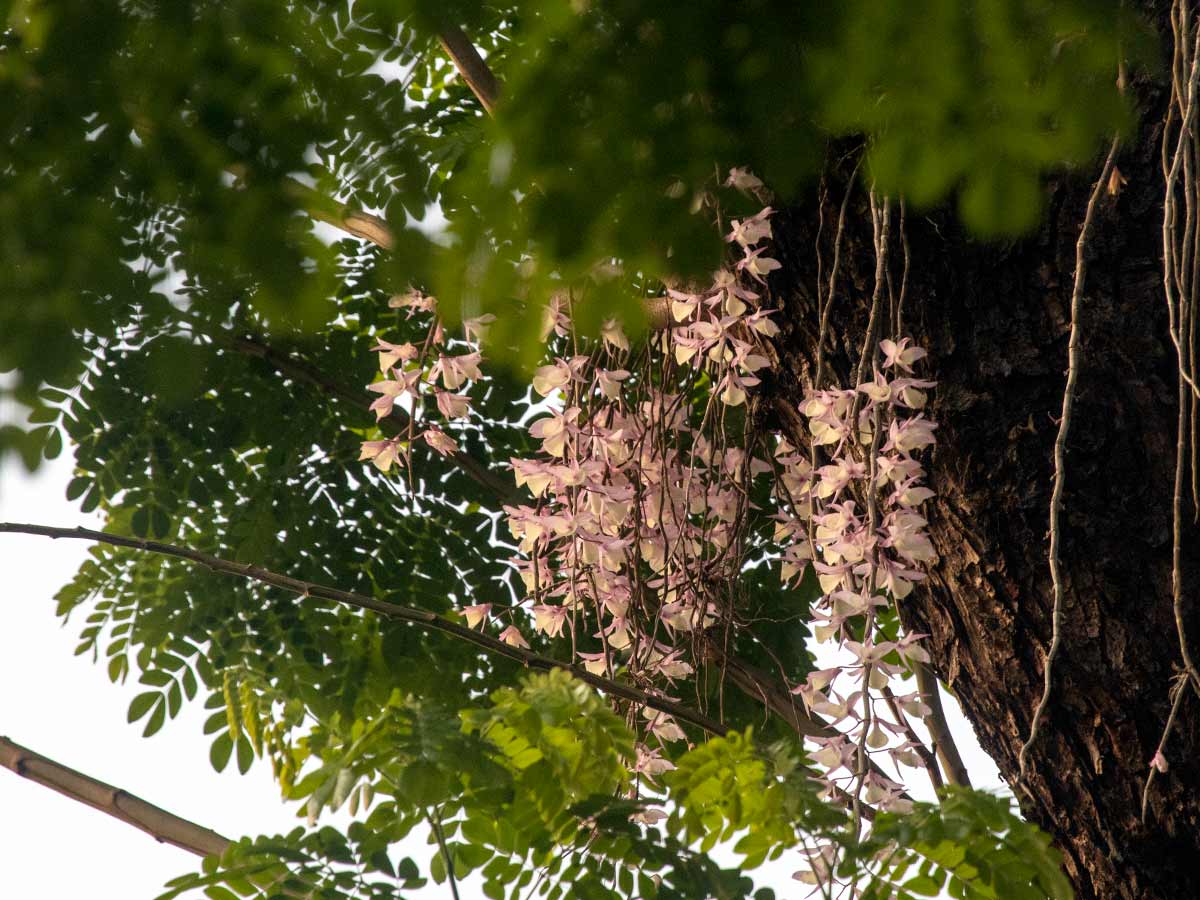
We had rented a Zoomcar in New Jalpaiguri and drove to Singalila. Himalayan road driving was a bit hectic with hill roads being narrow and damaged all the way but it was enjoyable with our birding in every turn of the road. By the time we reached our stay, we had already seen more than 40 birds and few rhododendrons in bloom too.
We went in the mid of April and the weather was pleasant. Whenever we visit Himalayan region, we always hear the Blue throated barbet and Great barbet sound. This time around their sounds were overtaken by the sound of cuckoos. Common Cuckoo and Himalayan Cuckoo were cooing the entire time we stayed in Eastern Himalayas. As they were very shy and sensitive birds, even though we could hear their sound we couldn’t spot them at all. After some heavy search we spotted all the cuckoos by the end of this trip.

Near our stay, Verditer flycatchers , Rufous sibias and a few warblers were visiting a tree for berries and insects. The mornings started by 4’o clock in this region and the birds start their singing by 5’o clock. There were lots of song birds , so even the great song bird Blue Whistling Thrush was not singing in these areas as if they are afraid for some heavy competition.
We were told about a trekking place in Dhotrey by the host of our stay and we decided to visit that place. We packed few eggs for breakfast and started off early to the trek point. This place is not a regular tourist area , so there was no big crowd unlike the entrance place for Singalila national park where we saw all the tourists. So we just parked our car casually and while we were picking up our cameras, I just turned my head to see some unexpected scenery infront of me. At first I couldn’t even believe my eyes and then seeing my expression both Vinod and Raghu also turned to see the mighty Kangchenjunga peak.
View of Kangchenjunga Peak
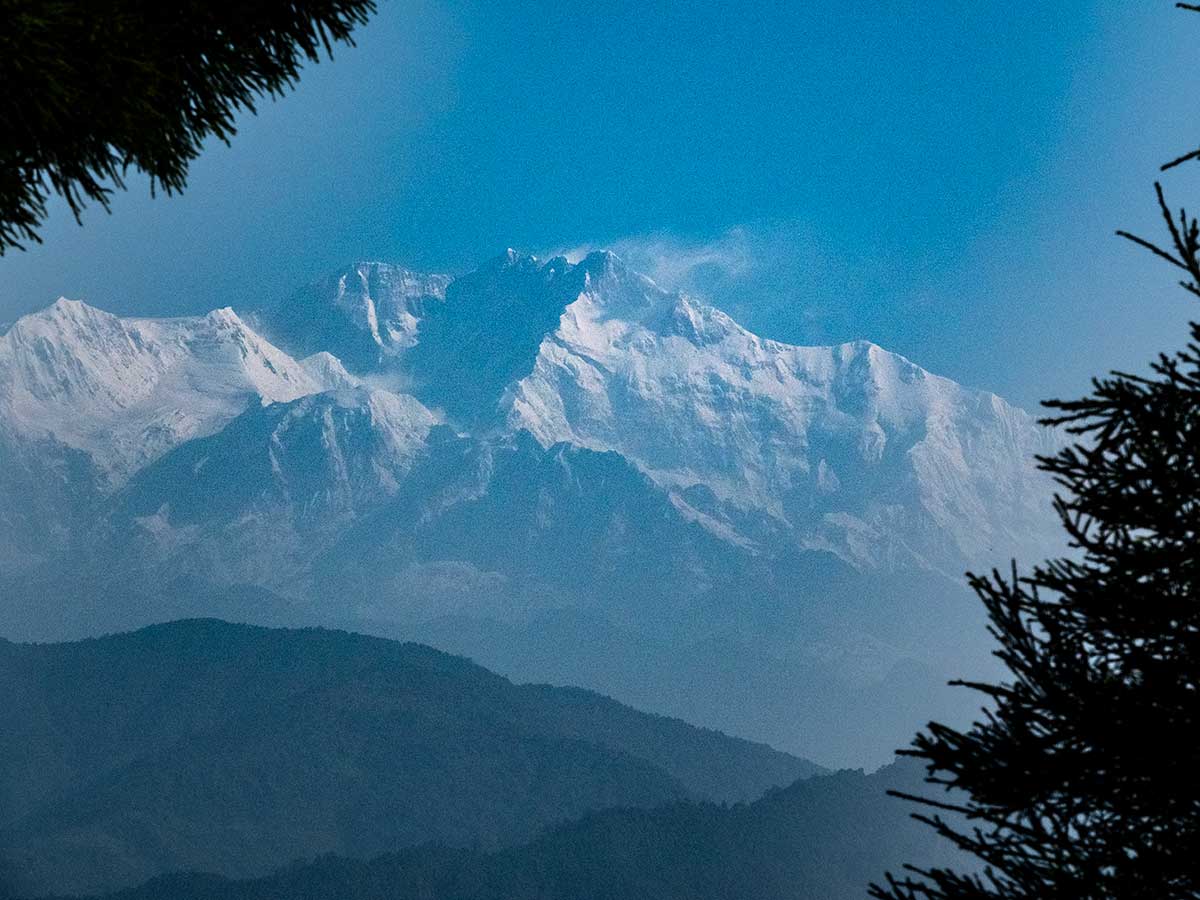
Previous day we drove through the same route, but we didn’t notice this scenic view. Maybe mist covered the mountain when we crossed this place, we were not sure. We enjoyed the view for few minutes and then realized we were feeling extra chill in that open place. We rushed to the pine forest to escape from the cold wind.
The initial walk amidst those tall pine trees reminded me of our stay in Himachal pradesh but then the scenery slowly changed to Rhododendrons and Oak trees. The tall mossy covered trees and the shrubs looked very beautiful but overall the birds sound were very less. Now and then one tiny bird would hop on a shrub or cross the trail path, we will chase behind that one for few minutes and then continue with our walk. We saw Rufous gorgeted flycatcher, Blue-tailed Minla, Whistler’s Warbler, Green-tailed Sunbird etc.
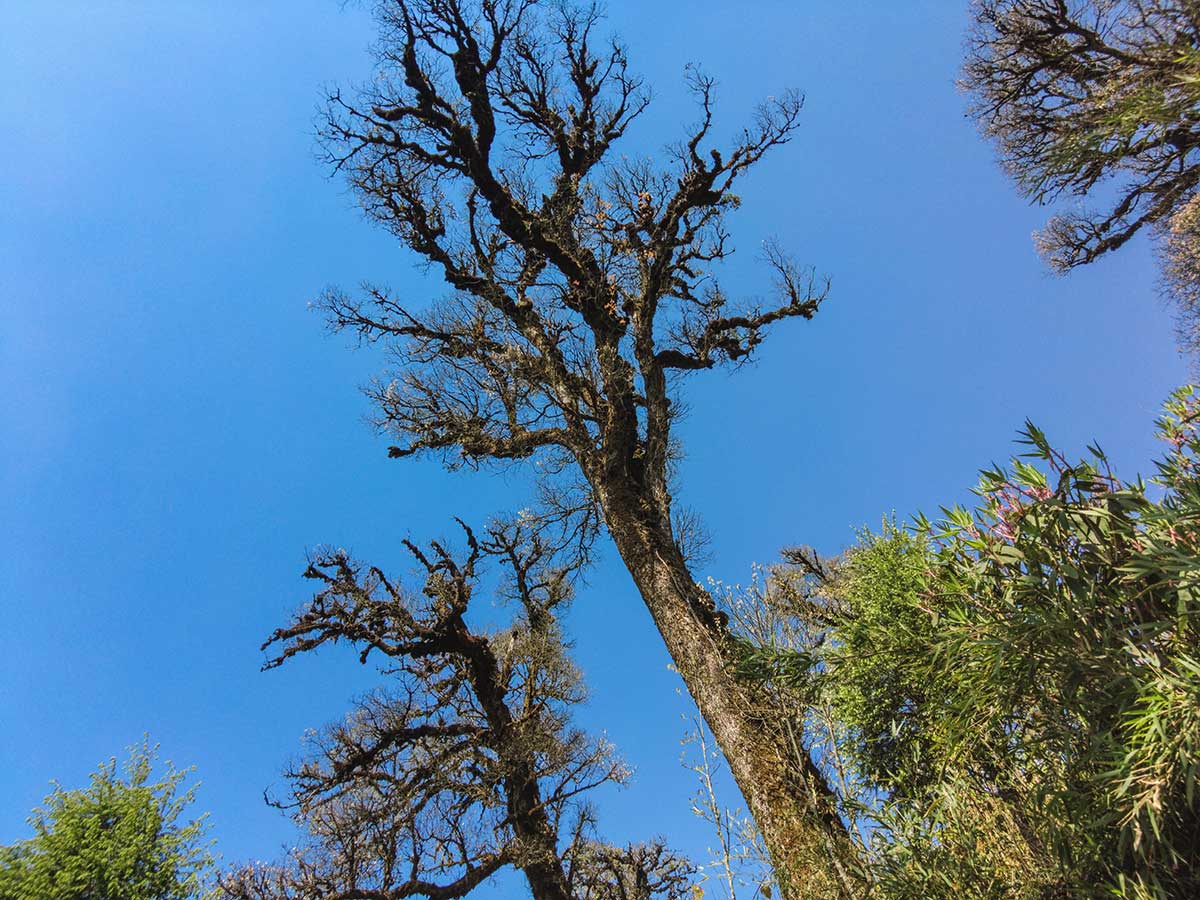
Train of Caterpillars
After few kilometers the canopy covered the trail path so even on a bright sunny day it all looked very dark. So we decided to return back where the sunlight seeped through. We were seeing many hairy caterpillars crossing the paths in our walk but in this spot we spotted clusters of caterpillars moving in a train like pattern. We were cautious not to touch any leaves as these hairy caterpillars are always very itchy. But Raghu and myself already got few itchings on the face. Then my eye caught on a moss covered tree completely covered with these hairy caterpillars. There was a long train from the top of the tree to the bottom and that tree was really tall ! All three of us were awestruck by the number of caterpillars in that tree.
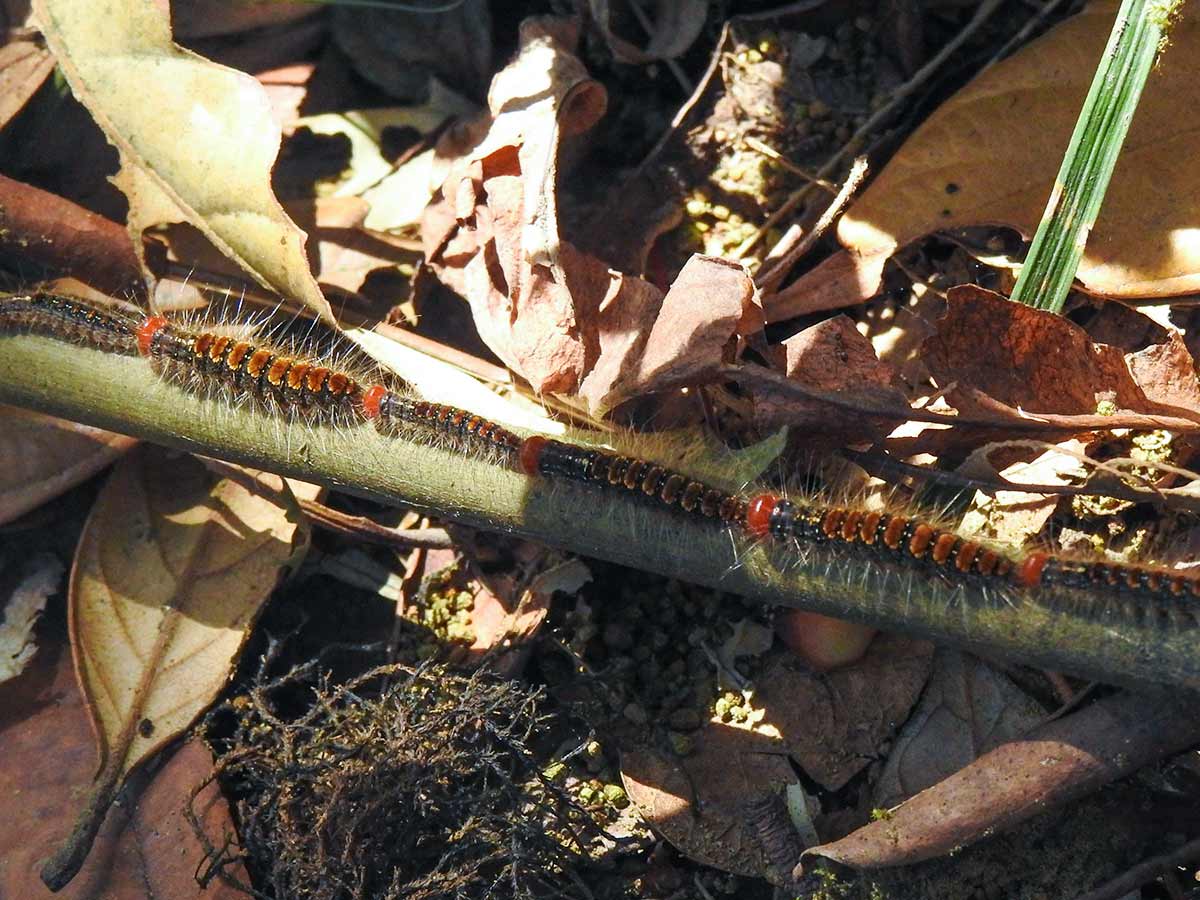
Often times once you can see the pattern then your eye will surprisingly catch a lot more, so we ended up finding caterpillars in almost all trees. It seems the place is not conducive for tree hugging ! We couldn’t figure out which moth would have laid these many eggs on these trees. What we know is that hairy caterpillars are not usually eaten by birds except for cuckoos. So vinod was saying maybe this is all linked to the non-stop singing of cuckoos in the neighborhood. When you have belly full of food , what else to do right ? They were even calling during midnight.
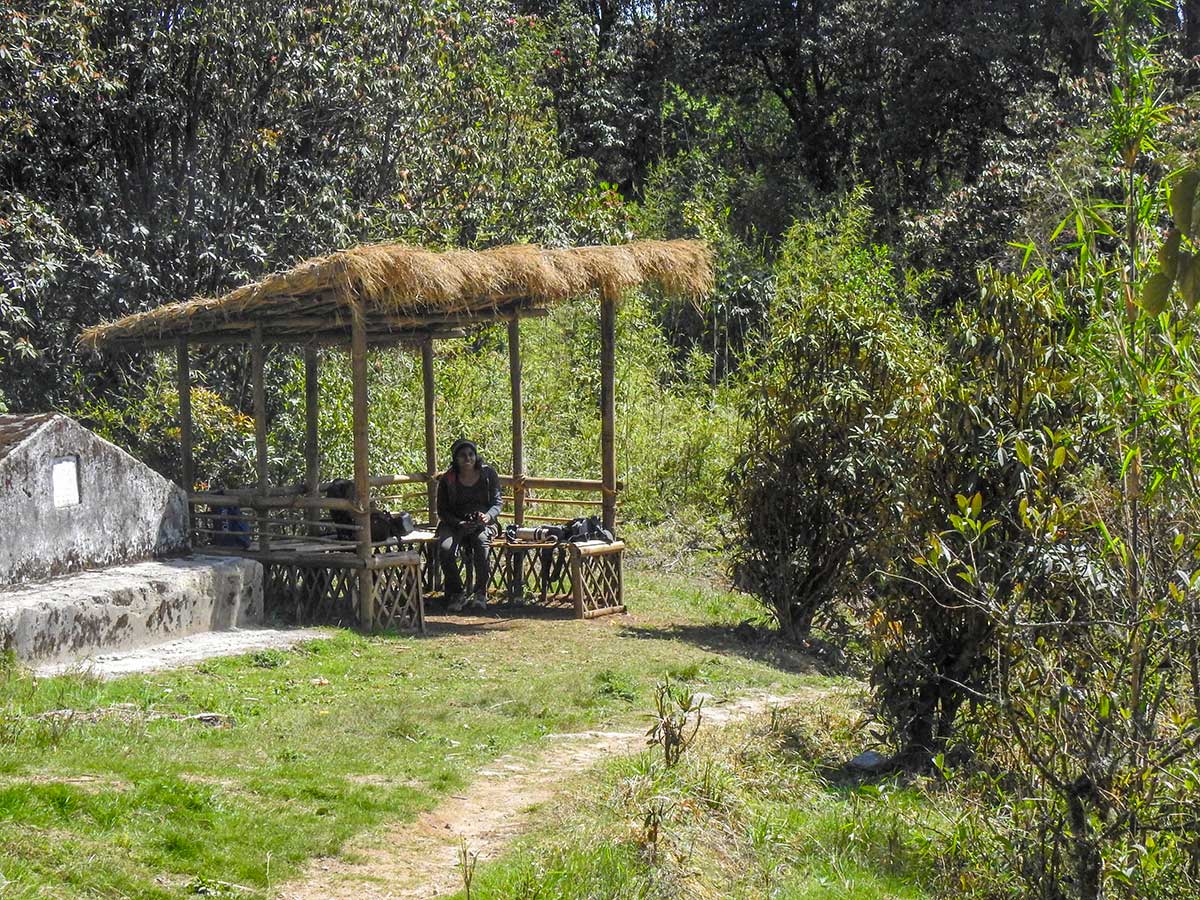
We were expecting to see some pheasants wandering around in this trail path as there was no human movement. As we couldn’t spot any , we were grumbling about that and walked back. When we reached our car we were looking for the Kangchenjunga view which was not visible now but we saw another spectacle. A flock of birds were flying and hiding inside the trees in the village. So we ran off there to see the birds and the show continued every few minutes but it was very quick. It looked like magic when all birds came out of nowhere and disappeared infront of our eyes. After some serious search on the trees we could spot few birds and they were Plain mountain finches.
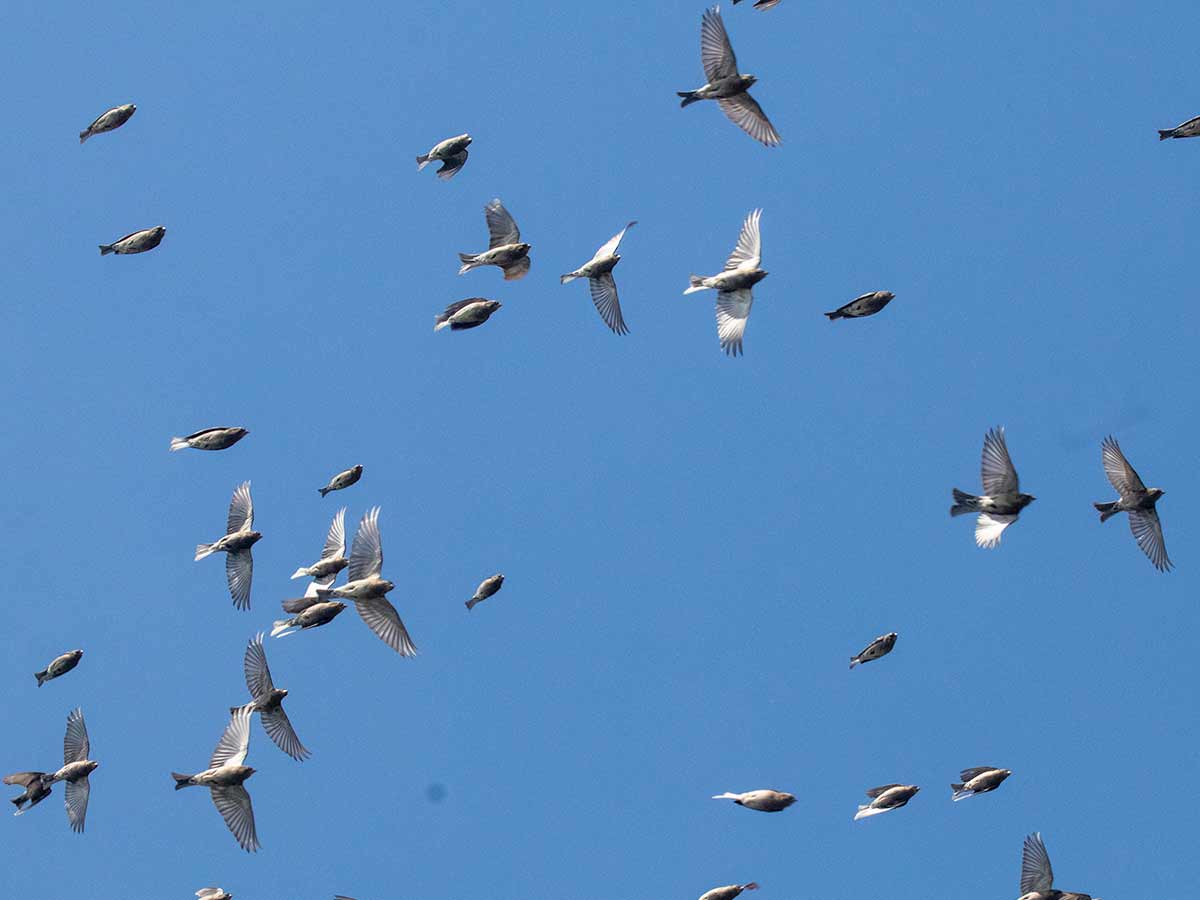
We decided to return back to our stay for lunch and then drive to the nearby stream. Vinod was driving and birding as usual when he spotted the Kalij pheasant rummaging the ground with his pair. Even though we had been to different Himalayan regions multiple times, that was the first time we were seeing a pheasant roaming around casually during this time of the day. The female left the place soon but the male continued foraging. What a beautiful pheasant with amazing colors and we watched him till another car crossed and scared away the pheasant. We were really thrilled with our sighting and went to have our lunch.
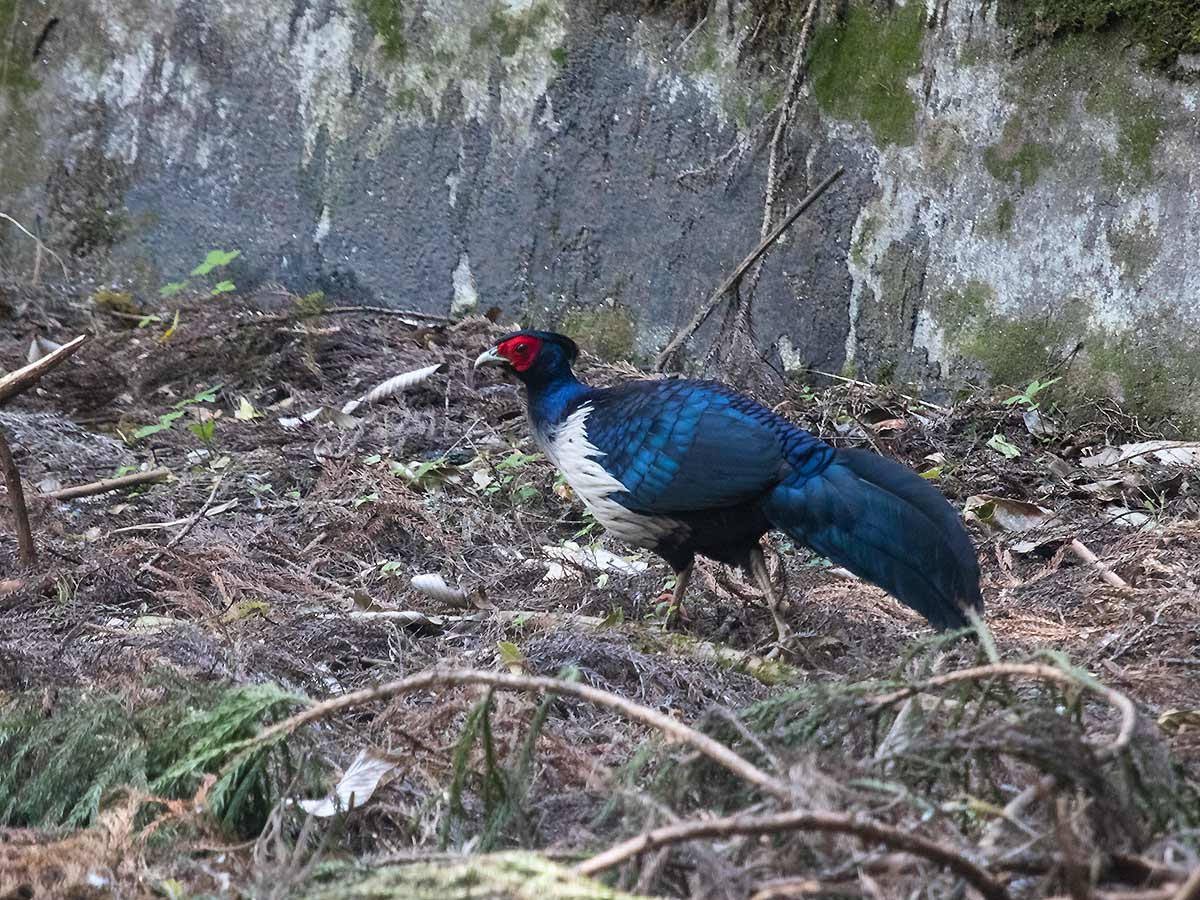
Rufous sibia , Grey-winged black bird were flying around casually in that area. The sound of Rufous sibia was initially very confusing and once we recognized the sound we realized they are the one making the sound everywhere. Even though we know they are Himalayan special birds, we started to give a reaction to them like we give to Red-whiskered bulbul in plains. We found a walking route to the stream in between two hills and we went to that place in the evening. The villagers use the path regularly , so there was well laid stairs to reach the stream.
There was a temple function in one hill, so the locals from the other hill were attending the event and returning back to their home. It looked just like crossing the streets for those men , women and kids. For us the walk was not hard but the place looked very mesmerizing. We had to stop every few minutes to see the Tree creepers, Nuthatches, Warblers and even a Maroon oriole on a tree at a distance. From the viewpoint of locals it would have looked like we were slow walking , so they were sneering at us when they were crossing by. We didn’t mind though as it was a regular day for them but for us that was a once in a lifetime visit.
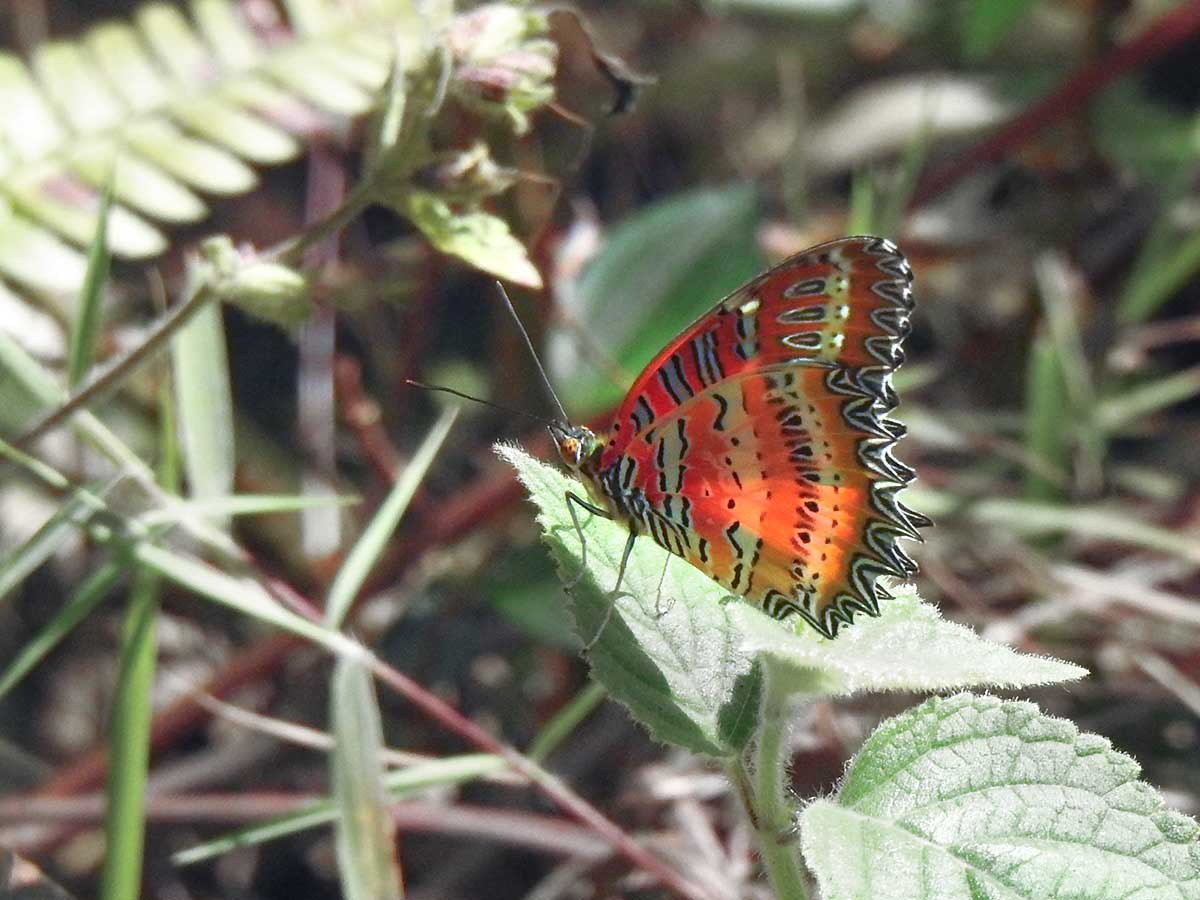
We reached the stream and we just enjoyed the scene infront of us. Pure water, native vegetation, forest trees, epiphytic orchids and just the sound of gurgling water along with few birds. That’s the perfect Himalayan stream you could expect for ! Then to make the moment more perfect , we saw Slaty-backed forktail and Plumbeous waterstart on the rocks in the stream. When we thought nothing could add on to that moment, vinod spotted a Brown dipper. We were just seeing the head initially and then it came out of water and started drying off on another rock in the stream. It was really a glorious sight to see all these freshwater birds in that stream at the same time.
From the moment we went to the stream, Vinod and my eyes were stuck on a huge basket of Celogyne hanging on a tree at low level in full bloom though the flowers were not very fresh. So we decided to cross the stream and go near the flowers plunging our foot on the cold water and then on the slurry. I was really very happy to see the orchid up close and then decided to return back to the same place in the morning.
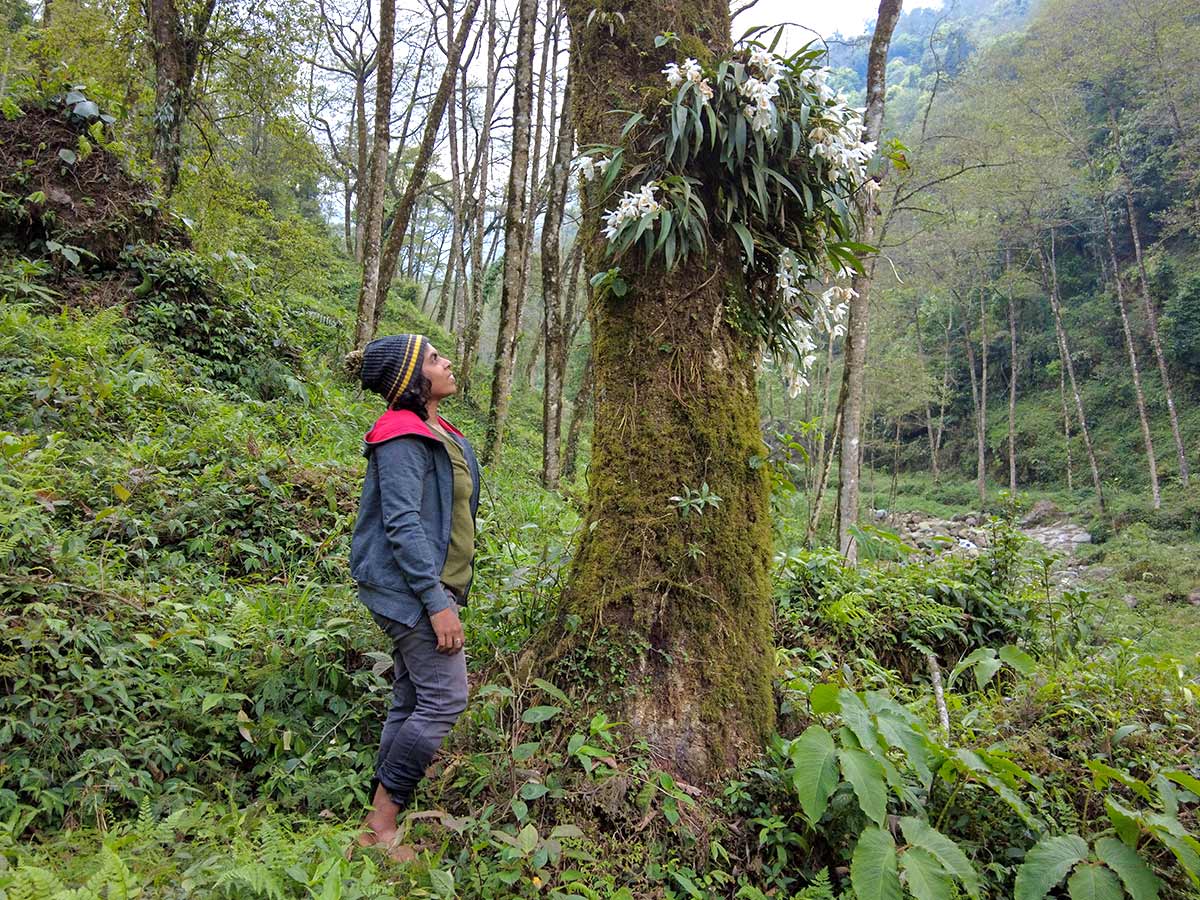
All three of us had more energy to climb up the stairs as we were really very content with our day. A Mountain hawk eagle was circling up in the middle of two hills and we climbed up hearing all the bird sounds at dusk. It was really a dawn to dusk birding day.
The next morning we went to the same stream and on the way I saw an interesting Impatiens species which I missed the day before. Later we got that identified as Impatiens graciliflora which was not an easy plant to see. Vinod showed me another interesting bellflower too. We had another pleasant morning birding and we bid farewell to that beautiful place. In the stay , the host was surprised to see our intense birding as none visit these areas for birdwatching. He gave each of us a white scarf with few markings for safe travel. We were only into wildlife travel but these kind of events make us learn about the culture too. That’s why we love travelling, there is always so much to learn. Like I said earlier, we went to Singalila without any expectations and we came back with great memories.